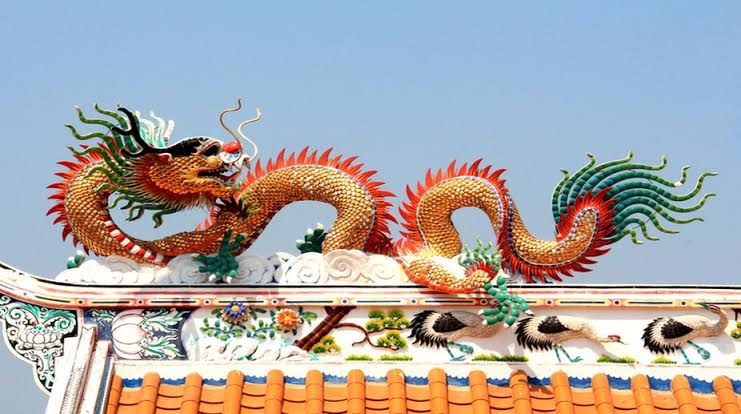Time To Step On Dragon’s Tibet Toe : Why India Needs To Gather Momentum Over China Issue

Dated : 27 Dec 2020 (IST)
Without sovereignty over Tibet, China’s outlandish claim on the ‘palm’s five fingers’ — never proclaimed as official policy by the People’s Republic of China — becomes void
Mao Zedong reportedly said that Tibet was China’s ‘right hand palm’ and Ladakh, Nepal, Bhutan, Sikkim and the area known today as Arunachal Pradesh the palm’s ‘five fingers’. Mao believed it was the duty of the Chinese Communist Party (CCP) to ‘liberate’ the territories India had ‘occupied’ — Ladakh, Sikkim and Arunachal Pradesh — as well as the independent nations of Bhutan and Nepal.
Why does Tibet continue to both obsess and terrify Beijing? Without sovereignty over Tibet, its outlandish claim on the ‘palm’s five fingers’ — never proclaimed as official policy by the People’s Republic of China — becomes void. China’s Tibet paranoia has a long history. Tibet was intermittently an independent country for centuries. It came under the rule of China’s Qing dynasty in 1720, but won back independence in 1912 when the Qing dynasty fell. Tibet’s independence was short-lived.
China invaded Tibet in 1950, annexing it in 1951. India suddenly found itself sharing a land border with China. Through most of history, Tibet and the Himalayas served as a buffer between India and China. Without Tibet, there would be no Line of Actual Control (LoAC) between India and China. China is an expansionist power. It is testing India’s will across the LoAC.
Winter has set in along the mountainous ranges of eastern Ladakh. With Indian troops in control of key heights, China’s options are limited. The People’s Liberation Army (PLA) is not geared for winter warfare in mountainous terrain. The three-stage de-escalation tentatively agreed upon by the Indian and Chinese sides will now test Beijing’s true intent. India has already ceded territory to China following the PLA’s transgressions in the summer.
Beijing’s declaration that it abides by its 1959 definition of the LoAC contained in Zhou Enlai’s letter to Jawaharlal Nehru dated November 7, 1959, complicates matters. Military de-escalation will not guarantee an end to further Chinese aggression in a broad swathe across the LoAC from Arunachal Pradesh to the plains of Depsang. Beijing deeply resents the presence in India of the 14th Dalai Lama and over 150,000 Tibetan refugees.
China’s paranoia over growing unrest in Tibet has led it to employ the same oppressive methods on the local population as it did with restive Uighur Muslims in Xinjiang. Tibet and Xinjiang are China’s two largest provinces. Without them, the total land area of China would be reduced by over 30%. Rural workers in Tibet have been pushed into labour camps. These resemble military-style barracks similar to those in western Xinjiang.
Most of these facts exposed in investigative reports have not received wide international attention. This is because the Communist Party of China (CPC) has subverted key global media and academic organisations to downplay the human rights abuses in Tibet and Xinjiang. In a September Reuters investigative report, ‘China sharply expands mass labour programme in Tibet’ (reut.rs/34ZWZIz), Adrian Zenz, a sinologist and senior fellow of the US anti-communist non-profit organisation Victims of Communism Memorial Foundation, states, ‘This is now… the strongest, most clear and targeted attack on traditional Tibetan livelihoods that we have seen almost since the Cultural Revolution [of 1966-1976].’
A large number of Tibetans regard China as a brutal occupying power. They draw sustenance from — and declare loyalty to — Tenzin Gyatso, the current Dalai Lama. At 85, the Dalai Lama knows China is running the clock down. It will, on his demise, appoint its chosen Panchen Lama as the Dalai Lama’s successor. That would effectively end the centuries-old institution of the Dalai Lama. India has been overcautious in dealing with the Dalai Lama. He is not allowed to make political statements. But following the stand-off in eastern Ladakh, the gloves must come off. Exercising its second option, India must encourage political activity among Tibetan refugees and by the Tibetan government-in-exile in Dharamshala.
China protects Pakistani terrorists from censure by the United Nations Security Council (UNSC). It is complicit in violating Indian sovereignty by building the China-Pakistan Economic Corridor (CPEC) through Pakistan-Occupied Kashmir (POK). India owes no favours to China over Tibet. It must abandon its timidity over the only Chinese province that shares a land border with India. A strategic policy to counter China’s expansionism must include both future military and tactical options, as Defence Minister Rajnath Singh has repeatedly said. Tibet is China’s Achilles heel. India must step on it.
Source : Indiatimes




